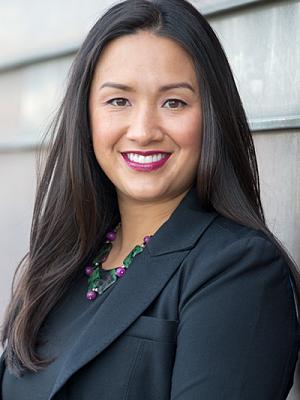
Vitae 2021, a hallmark event recognizing research excellence across University of Utah Health, featured six rising-star faculty who are on the forefront of their professions. The annual symposium, presented by Vice Chair for Faculty Affairs and Development Michael Rubin, MD, PhD, on behalf of the Office of the Senior Vice President for Health Sciences Research Unit, allows researchers to share stories of their science, and how they got to where they are today, in a compelling way to a hybrid live and online audience.
Raphael Franzini, PhD, Assistant Professor, Department of Medicinal Chemistry, College of Pharmacy
A Bottom-up Approach to Discovering Drugs for Chronic Disease
Treatment of many diseases primarily relies on small-molecule drugs. However, drugs remain elusive for many conditions because their development is challenging, laborious, and expensive. To address this issue, we pursue a bottom-up approach towards discovering and delivering drugs. My group advances a technology that miniaturizes drug discovery by attaching DNA-barcodes to libraries of compounds.
With such DNA-encoded libraries, one can simply “fish” for drug candidates, greatly simplifying the discovery of new candidate molecules. My lab aims to discover new chemical entities that can restore healthy processes and lead to medicines for cardiovascular disease, neurodegeneration, and cancer. We also are interested in using chemical reactions to deliver drugs specifically to the site of disease. Towards this goal, we have developed drug-release reactions that are compatible with living organisms. With these capabilities in hand, we are actively moving new therapeutic approaches from the early stages towards translation.
Jim Heys, PhD, Assistant Professor, Department of Neurobiology, School of Medicine
Neural Clocks: How the Brain Perceives and Remembers Time
Perhaps no concept is as simultaneously pervasive and elusive as time. It pervades our behaviors and is ingrained in our language and
interactions. Yet, it is unclear if time is a real physical quantity. The ability of the nervous system to learn and remember, to infer cause and effect, and to make predictions about future outcomes critically depend upon temporal perception. Furthermore, most neurological diseases and disorders display deficits in timing and have been described as deficits in temporal coordination. Still, the mechanistic understanding of how the brain keeps track of time is little understood.
We are interested in where these "internal clocks" exist in the brain, how their circuits generate temporal information, and how these signals are used to perform time-dependent behaviors. To address these questions my lab leverages cutting-edge optical imaging and electrophysiological techniques designed for application in awake-behaving rodents. These tools and techniques enable recording and manipulation of neural physiology, from the level of individual synapses up to thousands of simultaneously monitored neurons.
Lindsay Keegan, PhD, Research Assistant Professor, Department of Internal Medicine, School of Medicine
Using Mathematics to Understand the Spread and Control of Infectious Diseases
The ongoing COVID-19 pandemic highlights the impact of infectious diseases on our daily lives. Questions about how quickly a pathogen spreads
and how to control it are central to guiding control and prevention measures. My research explores how transmission dynamics impact the control and elimination of infectious diseases. I do this by developing and applying novel methods to better understand the epidemiology, ecology, and evolution of infectious diseases and translating that knowledge for public health decisionmakers.
Throughout the COVID-19 pandemic, I have worked closely with decisionmakers at the local, state, and federal levels—including the Utah Department of Health and the Centers for Disease Control and Prevention—to develop mathematical models to forecast COVID-19 spread, project the impact of different interventions, optimize the deployment of limited tests and vaccinations, and estimate the effectiveness of the vaccinations in the face of the Delta variant.
Anne Kirby, PhD, Assistant Professor, Department of Occupational and Recreational Therapies, College of Health
Following Community Priorities to Advance Autism Research
Autism is a common but poorly understood neurodevelopmental condition affecting individuals throughout the lifespan. Clinical and research efforts have largely ignored the perspectives and priorities of autistic people, resulting in limited knowledge about areas of critical importance.
My research focuses on topics identified as priorities for autistic people and their families, such as sensory processing, preparing for the transition to adulthood, and suicide prevention. Using variety of research methods—qualitative studies, quantitative data analysis, and intervention development—I work to understand complex issues and create real-world solutions. My current research takes a community-based participatory approach, working with autistic adults as study partners to gather information on suicide risk. We will also develop a community-based autistic suicide prevention program to educate community members and reduce risk.
Michelle Litchman, PhD, Assistant Professor, College of Nursing
Improving Access to Diabetes Care
34 million Americans live with diabetes. Even with amazing advancements in diabetes care, many people still do not have access to the diabetes
education, prescriptions, and support they need to be successful. My research examines the challenges, consequences, and solutions related to accessing diabetes care.
My work centers around infoveillance of do-it-yourself solutions to understand diabetes management in the real-world. It also explores the development and delivery of integrated behavioral interventions for underserved and underrepresented populations with diabetes and the social context of diabetes management in online and family environments. My work has influenced local health policy to improve access to insulin.
Patrice Mimche, PhD, Assistant Professor, Department of Pathology, School of Medicine
Fibrosis: From Deciphering the Mechanisms to Developing Medicines
Fibrosis is an excessive wound healing response after chronic tissue injury. Unchecked, it will destroy organ architecture, eventually leading to organ dysfunction and failure. Fibrosis can affect any organ in the human body and is responsible for up to 45% of all deaths in developed nations. Unfortunately, therapeutic options for managing fibrotic diseases are severely limited.
My lab focuses on deciphering the molecular mechanisms of pathological organ inflammation and fibrosis. Previously, while seeking to understanding the role of axonal guidance cues in the pathogenesis of cerebral malaria infection, I discovered that a member of the Ephrin neuronal guidance system could contribute to tissue inflammation and fibrosis. This discovery has shaped my current research program seeking to elucidate how the Ephrin signaling pathway promotes pathological inflammation and fibrosis across multiple organs—skin, lung, liver, and kidney. The work in my lab could lead to the discovery/development of novel Ephrin-based therapeutics for treating fibrotic disorders. Fibrotic diseases my lab is currently working on include scleroderma, idiopathic pulmonary fibrosis, chronic kidney diseases, and non-alcoholic steatohepatitis (NASH), and associated metabolic disorders.





